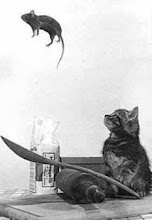Years ago, I wrote an essay called “The Ways We Lie” for Utne Reader. It was the cover story for an issue called, “The Whole Truth About Lying, Trust Us” which had originally been my title for the piece. Sixteen years later, that essay is still fresh and stimulating to me--the writer.
I listed 10 different ways that we lie—as individuals, as communities, as institutions, as governments, as civilizations. I wanted to actually put a name on certain kinds of behavior that we accept all the time because, in the human gestalt, something doesn't exist until it has a name.
The ten kinds of lies we tell are:
- The White Lie
- Facades
- Ignoring the Plain Facts
- Deflecting
- Omission
- Stereotypes & Clichés
- Group Think
- Out-& Out Lies
- Dismissal
- Delusion
I wanted to paint examples that would put these behaviors into a context that would help the reader identify with the lies and I started with a sort of true confession. But this wasn’t just for personal self-reflection—I went on to examples of the same lie being told by an institution, a government or a whole culture.
In this telescoping back and forth between personal and public, between a micro-view and a macro-view, I hoped to give readers the same experience I’d had when I’d realized that the only difference between my lies as an individual and the lies of, say, a corporation, was the scale.
It began as an exciting idea, one that I’d been working on for years but along the way, it grew into a tar-baby experience. Confusion often over-took me. Then I realized that confusion was a tactic to hide the truth. I kept bumping into something that I couldn’t name. Something that was very big. It was literally a tactile feeling, as if I were wandering around in a dark room, stepping in the same pool of goo from different directions. The goo stuck, the sensation made me shudder, and I felt unable to wipe it off.
I had to meet the deadline so the only thing to do was to stash away this mysterious tar-baby and keep things simple. Later I would tease out this boogeyman.
The essay turned out to be a great success, and I’m still surprised and humbled by how many people have read it, particularly in their college English course and how it changed their paradigm of the world.
It took me years to figure out who the boogeyman was which seemed to stick to every lie that I’d defined. When I finally put a name on it, it seemed so obvious and simple that I was ashamed I hadn’t seen it sooner.
The boogeyman was evil. I don’t mean EVIL in all capital letters. I don’t even mean Evil with a capital E. I mean, evil. All the little evils that we become immune to from constant exposure. The little evils that, like a virus, mutate and adapt. The little evils that hide behind our excuses or our secret self-loathing, that prey on our fears that we might be found out. That we’re really not loveable, or successful or competent. Like viruses, they cycle back on themselves, recombine and reinvent themselves to become even more invisible.
Here are a few excerpts from the essay:
The White Lie
A man who won't lie to a woman has very little consideration for her feelings. — Bergen Evans
The white lie assumes that the truth will cause more damage than a simple, harmless untruth. Telling a friend he looks great when he looks like hell can be based on a decision that the friend needs a compliment more than a frank opinion. But, in effect, it is the liar deciding what is best for the lied to. Ultimately, it is a vote of no confidence. It is an act of subtle arrogance for anyone to decide what is best for someone else.
Yet not all circumstances are quite so cut-and-dried. Take, for instance, the sergeant in Vietnam who knew one of his men was killed in action but listed him as missing so that the man's family would receive indefinite compensation instead of the lump-sum pittance the military gives widows and children. His intent was honorable. Yet for twenty years this family kept their hopes alive, unable to move on to a new life.
Dismissal
Pay no attention to that man behind the curtain! I am the Great Oz! —The Wizard of Oz
Dismissal is perhaps the slipperiest of all lies. Dismissing feelings, perceptions, or even the raw facts of a situation ranks as a kind of lie that can do as much damage to a person as any other kind of lie. The roots of many mental disorders can be traced back to the dismissal of reality. Imagine that a person is told from the time she is a tot that her perceptions are inaccurate. "Mommy, I'm scared." "No you're not, darling." "I don't like that man next door, he makes me feel icky." "Johnny, that's a terrible thing to say, of course you like him. You go over there right now and be nice to him."
I've often mused over the idea that madness is actually a sane reaction to an insane world. Psychologist R. D. Laing supports this hypothesis in Sanity, Madness and the Family, an account of his investigation into the families of schizophrenics. The common thread that ran through all of the families he studied was a deliberate, staunch dismissal of the patient's perceptions from a very early age. Each of the patients started out with an accurate grasp of reality, which, through meticulous and methodical dismissal, was demolished until the only reality the patient could trust was catatonia.
Dismissal runs the gamut. Mild dismissal can be quite handy for forgiving the foibles of others in our day-to-day lives. Toddlers who have just learned to manipulate their parents' attention sometimes are dismissed out of necessity. Absolute attention from the parents would require so much energy that no one would get to eat dinner. But we must be careful and attentive about how far we take our "necessary" dismissals. Dismissal is a dangerous tool, because it's nothing less than a lie.
Groupthink
Who is more foolish, the child afraid of the dark, or the man afraid of the light? — Maurice Freehill
Irving Janis, in Victims of Group Think, defines this sort of lie as a psychological phenomenon within decision-making groups in which loyalty to the group has become more important than any other value, with the result that dissent and the appraisal of alternatives are suppressed. If you've ever worked on a committee or in a corporation, you've encountered groupthink. It requires a combination of other forms of lying—ignoring facts, selective memory, omission and denial, to name a few.
The textbook example of groupthink came on December 7, 1941. From as early as the fall of 1941, the warnings came in, one after another, that Japan was preparing for a massive military operation. The navy command in Hawaii assumed Pearl Harbor was invulnerable—the Japanese weren't stupid enough to attack the United States' most important base. On the other hand, racist stereotypes said the Japanese weren't smart enough to invent a torpedo effective in less than 60 feet of water (the fleet was docked in 30 feet); after all, US technology hadn't been able to do it.
On Friday, December 5, normal weekend leave was granted to all the commanders at Pearl Harbor, even though the Japanese consulate in Hawaii was busy burning papers. Within the tight, good-ole-boy cohesiveness of the US command in Hawaii, the myth of invulnerability stayed well entrenched. No one in the group considered the alternatives. The rest is history....
Copyright © 2009 Stephanie Ericsson All Rights Reserved























No comments:
Post a Comment
Please! Do leave your comments, shared experiences and suggestions are very welcomed. And also a way to contact you. Thank you!